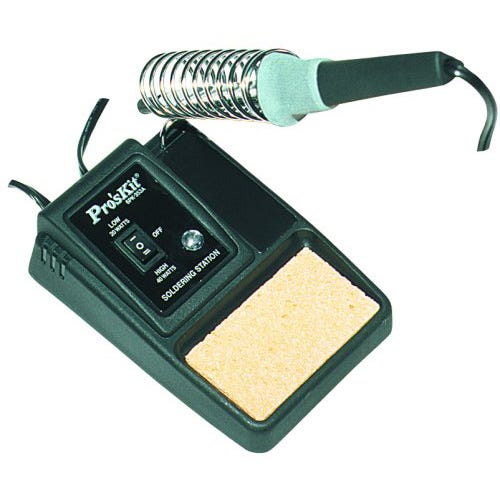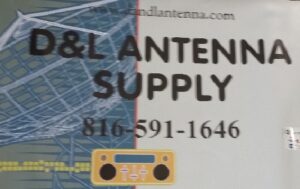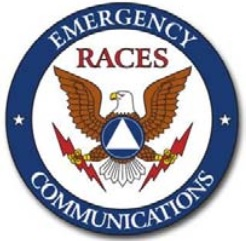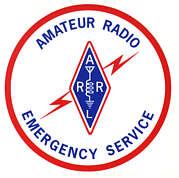Xtras Buy/Sell
Pay Your Dues Here
 If you are in need of repairs to your shack favorites. You might consider Exline Signal LLC Located just south of Centerville, IA Jim Warner provides excellent service at a fair price. Many amateurs in the Des Moines ares have used his service and speak highly of the results. The White Oak Grill in Exline is a tasty place to meet Jim and discuss your radio needs. His information is below. Exline Signal LLC Jim Warner WA9Z Commercial production service shop fully equipped to repair and recondition vintage tube to complex current production SMD technologies with fast turnaround times. Many OEM parts in stock. 27719 269th Ave Exline IA 52555 Phone: (641)856-7772 Contact email: jim@exlinesignal.com
If you are in need of repairs to your shack favorites. You might consider Exline Signal LLC Located just south of Centerville, IA Jim Warner provides excellent service at a fair price. Many amateurs in the Des Moines ares have used his service and speak highly of the results. The White Oak Grill in Exline is a tasty place to meet Jim and discuss your radio needs. His information is below. Exline Signal LLC Jim Warner WA9Z Commercial production service shop fully equipped to repair and recondition vintage tube to complex current production SMD technologies with fast turnaround times. Many OEM parts in stock. 27719 269th Ave Exline IA 52555 Phone: (641)856-7772 Contact email: jim@exlinesignal.com
Hamfest Vendors
 Associated Radio 913-381-5900
Associated Radio 913-381-5900 
CHIRP
Baofeng help
The January DMRAA meeting featured HTs and programming. We very often refer operators to the DMRAA frequency Guide. Below are links to Step by Step programming and both the guide and to a csv file that you can import into CHIRP. This allows the users to program their radios identical to the programming guide. Baofeng Step by Step Programming DMRAA Freq Guide Febuary 2022
Getting an FRN number 
Electronic Registration: If not already registered in CORES, go to the FCC Amateur Radio Web site and choose REGISTER “CORES/Call Sign”. Either choose REGISTER NOW if you are not sure you are already registered or, if you are already registered, choose UPDATE REGISTRATION INFORMATION. Questions can be directed to the CORES Help Desk at 1-877-480-3201. Complete your registration information (ignore the contact person, and SGIN references). If you are not a US citizen, follow the prompts. When the system confirms that you are registered, and the page goes on to read “To continue on to another FCC Filing system, select: AUCTIONS, BLS, CDBS, CSRS, ETFS, IBFS, or ULS, be sure to link your call sign to your registration by choosing “ULS”; then choose “Proceed to Call Sign/ASR Number Registration”, then re-enter the FRN number the FCC assigned to you and enter your password (for password help contact FCC Tech Support weekdays at 202-414-1250 or at ulscom@fcc.gov). Lastly, choose “ENTER CALL SIGNS” and enter your amateur call sign in the first block of the 100 spaces-then click on “Submit”, and you are now finished with your CORES Registration. Then choose “HOME”. You may update your registration (e.g., change address, passwords, or call sign) in a similar fashion. One big advantage to on-line registration is that the ULS application system checks for errors before you submit your data. This advantage is not available to manual filers. If you file electronically with ULS, you will be required to use your CORES password. CORES passwords will be the same as current ULS passwords. If you chose to log in with your TIN, the FCC will tell you your FRN. It should be used in all transactions with the FCC. If you don’t have an FRN, you will be prompted to obtain one first before the FCC will accept your application.
ARRL article about analog repeaters. This is a great read for new amateurs. QST – February 2015 Analog Repeaters
DMRAA Net SCRIPT
click here⇒ DMRAA Net Script MS Word DMRAA Net Script pdf
Who is RACES?
 RACES (Radio Amateur Civil Emergency Service) is an organization of volunteer Amateur Radio operators whose mission is to provide supplemental radio communications to state and local government during times of emergency. Only for government, on request by and between government agencies. Founded under the sponsorship of FEMA (Federal Emergency Management Agency) in the 1950s, RACES original mission was to provide emergency communications for civil defense purposes. Since then, the mission has broadened to include all local, regional or national civil (but not military) emergencies, not just those which are war related. It is strictly an Amateur Radio Service and, as such, the FCC (Federal Communications Commission) regulates it. In peacetime, it uses amateur frequencies, and RACES operators have the same privileges and restrictions that are afforded to any amateur of the same class of license. The administration and operation of RACES has been delegated by FEMA to the states. Iowa Homeland Security and Emergency Management handles RACES which is responsible for appointment of a volunteer State RACES Radio Officer… In summary, RACES is a governmentally sponsored organization, provided for in statutes at both the state and federal levels. Its members, however, are private volunteers, and all are FCC licensed Amateur Radio Operators.
RACES (Radio Amateur Civil Emergency Service) is an organization of volunteer Amateur Radio operators whose mission is to provide supplemental radio communications to state and local government during times of emergency. Only for government, on request by and between government agencies. Founded under the sponsorship of FEMA (Federal Emergency Management Agency) in the 1950s, RACES original mission was to provide emergency communications for civil defense purposes. Since then, the mission has broadened to include all local, regional or national civil (but not military) emergencies, not just those which are war related. It is strictly an Amateur Radio Service and, as such, the FCC (Federal Communications Commission) regulates it. In peacetime, it uses amateur frequencies, and RACES operators have the same privileges and restrictions that are afforded to any amateur of the same class of license. The administration and operation of RACES has been delegated by FEMA to the states. Iowa Homeland Security and Emergency Management handles RACES which is responsible for appointment of a volunteer State RACES Radio Officer… In summary, RACES is a governmentally sponsored organization, provided for in statutes at both the state and federal levels. Its members, however, are private volunteers, and all are FCC licensed Amateur Radio Operators.
Who is ARES ?
 ARES (Amateur Radio Emergency Service) is a field service organization of the American Radio Relay League (ARRL), a private, non-profit organization for Amateur Radio operators. Started in the 1930s, the ARES mission is similar to that of RACES, but a notable difference is that ARES is designed to provide emergency communications support to any agency, public or private. ARES may provide such support to municipalities, government and non-profit private agencies. Like RACES, all of its members are private volunteers. ARES leadership must be members of the ARRL. However, in contrast to RACES, ARES is part of a nongovernmental, non-profit private organization. Clearly, it is important that the volunteer know of the rules, procedures and limitations that apply to operations under RACES and ARES. This definition is adapted in part from Kansas RACES
ARES (Amateur Radio Emergency Service) is a field service organization of the American Radio Relay League (ARRL), a private, non-profit organization for Amateur Radio operators. Started in the 1930s, the ARES mission is similar to that of RACES, but a notable difference is that ARES is designed to provide emergency communications support to any agency, public or private. ARES may provide such support to municipalities, government and non-profit private agencies. Like RACES, all of its members are private volunteers. ARES leadership must be members of the ARRL. However, in contrast to RACES, ARES is part of a nongovernmental, non-profit private organization. Clearly, it is important that the volunteer know of the rules, procedures and limitations that apply to operations under RACES and ARES. This definition is adapted in part from Kansas RACES
ARE YOU FIXED, MOBILE, or PORTABLE?
An EM basic studies training module)
Although it is no longer a FCC requirement to state if your are operating “mobile” or “portable” when identifying, these terms are still often used. Frequently they are incorrectly used after a call sign. To help alleviate some of the confusion (and misuse) we offer this: The terms mobile and portable have nothing to do with the type of radio being used. If you are at your home location (the location given on your FCC license), you are not “mobile” even if you’re in your car in the driveway or parked on the street in front of your house. Also, you are not “portable” if you are using a Handie-Talkie in your back yard. Here is how the terms have been traditionally defined*: Fixed operation: Radiocommunications conducted from a specific geographical land location shown on the station license. Normally, your home “shack”. Portable operation: Radiocommunications conducted from a specific geographical location other than that shown on the station license. For example, a vacation home, or a friend’s house. A portable station is a solitary hiker using an HT camping at Beaver Lake for a few days. Or, it could a multi-band, multi-mode, multi-operator Field Day Station, with multiple tents, numerous antennas and several transmitters running up to full legal power with a 12 KW diesel generator running 24 hours a day! Mobile operation: Radiocommunications conducted while in motion or during halts at unspecified locations. (Note: It’s important to make the distinction between portable and mobile operation. Mobile refers to talking on your 2-meter rig while driving your pick-up truck, while jogging or while backpacking. Portable means operation for an extended period of time at a specific, definable location, such as your retreat cabin.” Maritime mobile and aeronautical mobile are occasionally heard. You may also hear pedestrian mobile, wheel chair mobile, bicycle mobile, equestrian mobile, railroad mobile, or other such definitive terms. These terms attract attention, add to the interest and the magic of radio, and are fun to contact. Sadly, amateur radio (like many other things in today’s world), has embraced a “laissez faire” (anything goes) approach to what was once a proud discipline. I for one, still prefer “the old ways” and still try to follow the traditional good operating procedures. — Editor *Source: The FCC Rule Book. A Guide to the FCC Regulations. ARRL 1989 This has been reprinted from the October 2007 issue of EMCOMM MONTHLY
